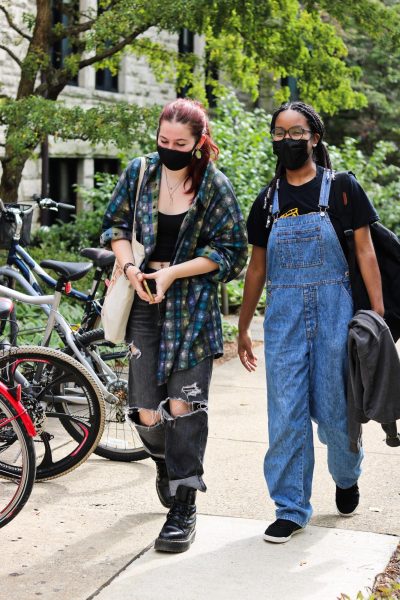Waning of Liberal Arts Indicative of Shifts in Higher Education
On April 2, The New York Times published an opinion piece by Bret C. Devereaux, a teaching assistant professor at North Carolina State University, titled “Colleges Should Be More Than Just Vocational Schools.” The piece covers the ongoing efforts made by university administrators and politicians across the political spectrum to defund the humanities, addresses the perception that liberal arts as a discipline is only made accessible to the privileged few, and argues for the necessity of liberal arts curricula and values in all educational contexts.
The debate about the future of liberal arts education is a contentious and nuanced one, encompassing issues such as accessibility, economic disparity, elitism, classism, and ideological conflict. The data is clear — liberal arts programs are being cut from both public and private institutions nationwide, and an increasing number of students are seeking careers at vocational schools and in STEM fields, resulting in low enrollment rates in many departments within the arts and humanities.
Devereaux’s argument within this debate hinges on the idea that a liberal arts education produces “good” citizens who are “better equipped to lead and participate in a democratic society.” He also counters the myth that a liberal arts education is not financially viable, providing data that shows a lower unemployment rate for history majors than for economics, business, and communications majors. Art history and philosophy majors also have relatively high mean incomes across the country, with robust projected job growth.
Still, students entering higher education, bearing their futures in mind, are opting for vocational and STEM schools at rising rates, and funding for the liberal arts is decreasing in response. According to an article published in Insider, Marymount University, a private Catholic institution in Virginia, eliminated nine of its major offerings, including English, art, and sociology. Many schools around the country have done the same, eliminating some of the most popular liberal arts majors.
It isn’t just schools that are aligning with the anti-liberal arts mentality. Politicians and community leaders alike are urging students to choose vocational schools over the liberal arts. In 2014, then-president Barack Obama said, “Folks can make a lot more, potentially, with skilled manufacturing or the trades than they might with an art history degree.” Even key liberal political figures have been advocating for the pursuit of a vocational education over a liberal arts one.
Despite the many benefits of the liberal arts educational model, there are a few undeniable pitfalls. According to The Economics Review, “a vocational education is more likely to offer immediate guarantees than a liberal one.” Vocational education requires less training and offers more immediate results because students are trained extensively in one particular field. By contrast, liberal arts students graduate from college as generalists in their designated field, an old model of education based on the assumption that students in higher education are preparing for post-graduate degrees.
Still, critiques that the liberal arts system is classist are valid. Vocational education is much cheaper than an education in the liberal arts, and the admissions process is much less rigorous. In a data comparison of tuition for vocational schools and colleges from Research.com, the average cost of private not-for-profit and public four-year colleges was about twice as much as the average cost of private not-for-profit and public two-year trade schools.
Most liberal arts college applications ask students to respond to several essay questions and several short-answer questions on top of the regular application requirements such as testing and high school credentials. For many, especially those whose literacy and high school careers have been deeply affected by their economic status, applying to liberal arts programs is simply not feasible.
Devereaux acknowledges this, but he seems to believe that the liberal arts have since shifted and have become accessible to all. This is not the case. For students who need money immediately after completing school, liberal arts degrees are often not viable. According to the Occupational Outlook Handbook from the U.S. Bureau of Labor Statistics, the median annual salary for a liberal arts major was $50,000 in 2019, compared to $61,640 for technical and trade school graduates in 2021. The return on investment for liberal arts students is significantly higher than for non-liberal arts college attendees, but the immediate returns of the latter may outweigh those of former for people who do not enter into higher education with economic privilege.
The position against the liberal arts is not universal. The South China Morning Post produced an opinion piece supporting the integration of liberal arts values and curricula into Hong Kong STEM schools in order to allow students to pursue “soft skills” while still aligning with Hong Kong’s STEM-focused curricula. The integration of liberal arts into STEM, vocational, and non-liberal arts curricula is an important step in turning students into well-rounded, creative, unique citizens with specializations in certain fields. This idea is important to both educational models.
Ultimately, the shift in higher-education liberal arts schools to a more accessible and less elitist model must first come with a dramatic alteration of the class system in the United States. This is not an educational problem, but an economic one. The conservative suggestion that inequality can be solved by getting rid of liberal arts programs, thereby reducing elitism, will only exacerbate class differences. Access to liberal arts curricula should not be contingent solely on removing elitism and expanding the curricula of both liberal arts and non-liberal arts schools but should rely heavily on targeting wealth disparity at the legal and state level. Still, it’s naive to think that the issues articulated in Devereaux’s article will simply dissipate without first addressing economic stratification in the United States.




